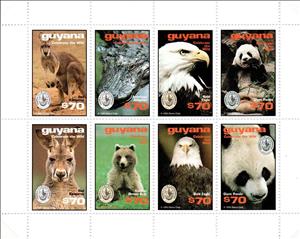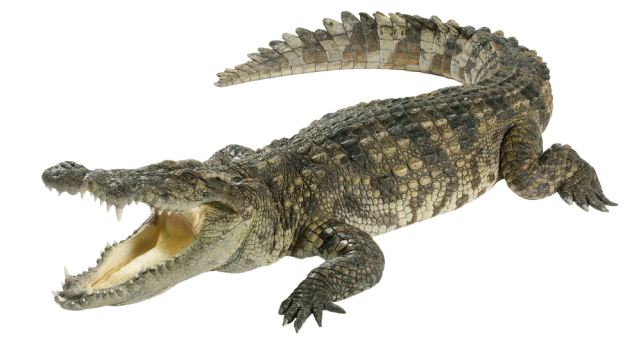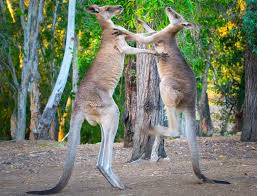Mini Sheet: Kangaroo with young, Alligator, etc. (Guyana 1994)
Kangaroo with young, Alligator, etc. (Guyana 1994)
20 May (Guyana ) within release Centenary of the Sierra Club goes into circulation Mini Sheet Kangaroo with young, Alligator, etc. face value 8*70 Guyanese dollar
| Mini Sheet Kangaroo with young, Alligator, etc. in catalogues | |
|---|---|
| Stanley Gibbons: | Sg: GY 3842a |
Mini Sheet is square format.
Also in the issue Centenary of the Sierra Club:
- Mini Sheet - Kangaroo with young, Alligator, etc. face value 8*70;
- Mini Sheet - Sea Lions, etc. face value 9*70;
- Mini Sheet - Kangaroo, Whooping Crane, etc. face value 8*70;
- Mini Sheet - Alligator, Alligator, etc. face value 6*70;
- Stamp - Alaskan Brown Bear and Cub face value 70;
- Stamp - Alaskan Brown Bear Fishing face value 70;
- Stamp - Alaskan Brownbear face value 70;
- Stamp - American Alligator (Logo at Left) face value 70;
- Stamp - American Alligator (Logo at Right) face value 70;
- Stamp - Bald Eagle face value 70;
- Stamp - Bald Eagle on Branch face value 70;
- Stamp - Clouds over Matterhorn face value 70;
- Stamp - Giant Panda face value 70;
- Stamp - Giant Panda Eating Bamboo face value 70;
- Stamp - Head of American Alligator face value 70;
- Stamp - Head of Bald Eagle face value 70;
- Stamp - Head of Bald Eagle face value 70;
- Stamp - Head of Giant Panda face value 70;
- Stamp - Head of Sea Lion face value 70;
- Stamp - Italian Alps and Meadow face value 70;
- Stamp - Italian Alps at Sunrise face value 70;
- Stamp - Lake, Italian Alps face value 70;
- Stamp - Matterhorn and Village face value 70;
- Stamp - Mono Lake at Sunset face value 70;
- Stamp - Red Kangaroo face value 70;
- Stamp - Red Kangaroo with Young face value 70;
- Stamp - Rock Pinnacles, Mono Lake face value 70;
- Stamp - Rock Pinnacles, Mono Lake face value 70;
- Stamp - Sea Lion face value 70;
- Stamp - Sea Lions on Rocks face value 70;
- Stamp - Sierra Club Centennial Emblem face value 70;
- Stamp - Summit of Matterhorn face value 70;
- Stamp - Whooping Crane Facing Left face value 70;
- Stamp - Whooping Crane in Courtship Display face value 70;
- Stamp - Whooping Crane Looking Right face value 70;
Mini Sheet Kangaroo with young, Alligator, etc. it reflects the thematic directions:
Animals are multicellular, eukaryotic organisms of the kingdom Animalia (also called Metazoa). All animals are motile, meaning they can move spontaneously and independently, at some point in their lives. Their body plan eventually becomes fixed as they develop, although some undergo a process of metamorphosis later on in their lives. All animals are heterotrophs: they must ingest other organisms or their products for sustenance.
Bears are carnivoran mammals of the family Ursidae (/ˈɜːrsɪdiː, -daɪ/). They are classified as caniforms, or doglike carnivorans. Although only eight species of bears are extant, they are widespread, appearing in a wide variety of habitats throughout most of the Northern Hemisphere and partially in the Southern Hemisphere. Bears are found on the continents of North America, South America, and Eurasia. Common characteristics of modern bears include large bodies with stocky legs, long snouts, small rounded ears, shaggy hair, plantigrade paws with five nonretractile claws, and short tails.
Birds (Aves), a subgroup of Reptiles, are the last living examples of Dinosaurs. They are a group of endothermic vertebrates, characterised by feathers, toothless beaked jaws, the laying of hard-shelled eggs, a high metabolic rate, a four-chambered heart, and a strong yet lightweight skeleton. Birds live worldwide and range in size from the 5 cm (2 in) bee hummingbird to the 2.75 m (9 ft) ostrich. They rank as the class of tetrapods with the most living species, at approximately ten thousand, with more than half of these being passerines, sometimes known as perching birds. Birds are the closest living relatives of crocodilians.
Birds of prey or predatory birds, also known as raptors, are hypercarnivorous bird species that actively hunt and feed on other vertebrates (mainly mammals, reptiles and smaller birds). In addition to speed and strength, these predators have keen eyesight for detecting prey from a distance or during flight, strong feet with sharp talons for grasping or killing prey, and powerful, curved beaks for tearing off flesh. Although predatory birds primarily hunt live prey, many species (such as fish eagles, vultures and condors) also scavenge and eat carrion
Crocodiles (family Crocodylidae) or true crocodiles are large semiaquatic reptiles that live throughout the tropics in Africa, Asia, the Americas and Australia. The term crocodile is sometimes used even more loosely to include all extant members of the order Crocodilia, which includes the alligators and caimans (family Alligatoridae), the gharial and false gharial (family Gavialidae) among other extinct taxa.
Kangaroos are marsupials from the family Macropodidae (macropods, meaning "large foot"). In common use the term is used to describe the largest species from this family, the red kangaroo, as well as the antilopine kangaroo, eastern grey kangaroo, and western grey kangaroo.Kangaroos are indigenous to Australia and New Guinea. The Australian government estimates that 42.8 million kangaroos lived within the commercial harvest areas of Australia in 2019, down from 53.2 million in 2013.Mammals are any vertebrates within the class Mammalia (/məˈmeɪli.ə/ from Latin mamma "breast"), a clade of endothermic amniotes distinguished from reptiles (including birds) by the possession of a neocortex (a region of the brain), hair, three middle ear bones and mammary glands. All female mammals nurse their young with milk, secreted from the mammary glands. Mammals include the largest animals on the planet, the great whales. The basic body type is a terrestrial quadruped, but some mammals are adapted for life at sea, in the air, in trees, underground or on two legs. The largest group of mammals, the placentals, have a placenta, which enables the feeding of the fetus during gestation. Mammals range in size from the 30–40 mm (1.2–1.6 in) bumblebee bat to the 30-meter (98 ft) blue whale. With the exception of the five species of monotreme (egg-laying mammals), all modern mammals give birth to live young. Most mammals, including the six most species-rich orders, belong to the placental group. The largest orders are the rodents, bats and Soricomorpha (shrews and allies). The next three biggest orders, depending on the biological classification scheme used, are the Primates (apes and monkeys), the Cetartiodactyla (whales and even-toed ungulates), and the Carnivora (cats, dogs, seals, and allies).
Reptiles are tetrapod (four-limbed vertebrate) animals in the class Reptilia, comprising today's turtles, crocodilians, snakes, amphisbaenians, lizards, tuatara, and their extinct relatives. The study of these traditional reptile orders, historically combined with that of modern amphibians, is called herpetology. Because some reptiles are more closely related to birds than they are to other reptiles (e.g., crocodiles are more closely related to birds than they are to lizards), the traditional groups of "reptiles" listed above do not together constitute a monophyletic grouping (or clade). For this reason, many modern scientists prefer to consider the birds part of Reptilia as well, thereby making Reptilia a monophyletic class.








